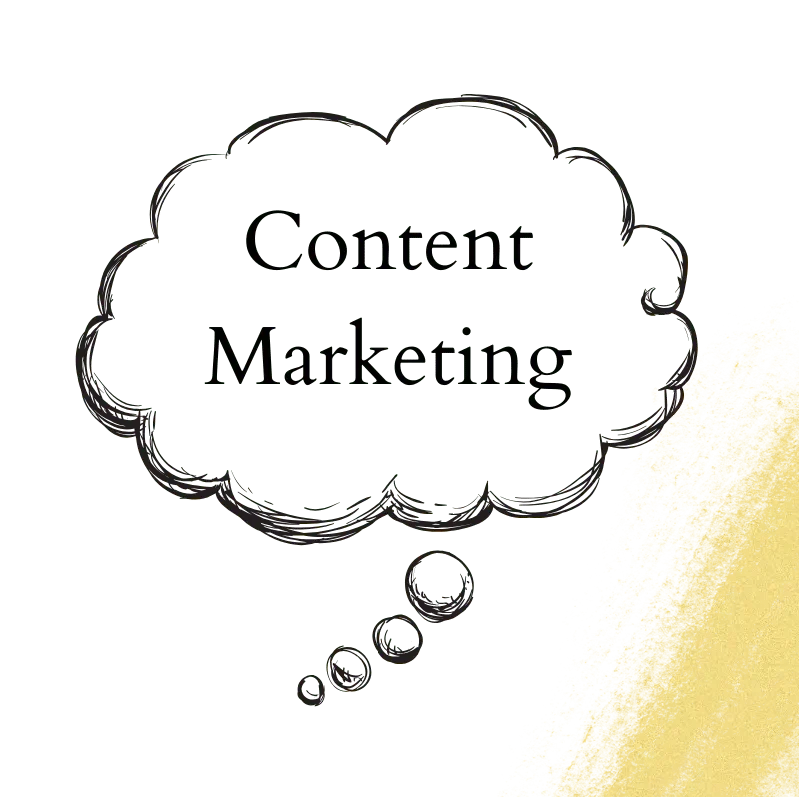Are you struggling to create engaging content that resonates with your target audience? If so, you’re not alone. Many businesses find it challenging to produce content that captures the attention of their ideal customers. Here’s where a striking content marketing infographic can spice up your content.

Content marketing infographics are an excellent tool for businesses looking to communicate complex ideas or data in a visually appealing way. Infographics combine text, images, and data to create a compelling narrative that engages your audience and helps them understand your message.
In this article, we’ll explore the benefits of content marketing infographics and provide you with tips on how to create effective infographics that resonate with your target audience. Whether you’re a small business owner or a marketing professional, you’ll learn how to use infographics to boost your content marketing efforts and drive more traffic to your website. So, let’s dive in!
The Essence of Content Marketing
Content marketing is a strategic marketing approach that focuses on creating and distributing valuable, relevant, and consistent content to attract and retain a clearly defined audience. It aims to drive profitable customer action by delivering informative, educational, and entertaining content that meets the needs and interests of the target audience.
Defining Content Marketing
Content marketing is not the same as digital marketing, although the two are closely related. Digital marketing encompasses all marketing efforts that use digital channels to promote a product or service, including search engine optimization (SEO), social media marketing, email marketing, and paid advertising. On the other hand, content marketing focuses on creating and sharing content to attract and retain customers.
The key difference between content marketing and other forms of marketing is that content marketing does not explicitly promote a brand or product. Instead, it seeks to build trust and credibility with the audience by providing valuable information that helps them solve their problems or achieve their goals. By doing so, it establishes the brand as a thought leader in its industry and creates a loyal following of customers who are more likely to make a purchase.
Key Components of a Successful Strategy
A successful content marketing strategy requires a clear understanding of the target audience, their needs and interests, and the channels they use to consume content. It also requires a well-defined brand voice and tone, a consistent publishing schedule, and a variety of content formats, such as blog posts, videos, infographics, podcasts, and social media posts.
To create effective content, you need to conduct thorough research on your target audience and their pain points. You should also analyze your competitors’ content and identify gaps in the market that you can fill. Once you have a good understanding of your audience and the topics they are interested in, you can start creating content that addresses their needs and provides value.
In summary, content marketing is a powerful tool for building brand awareness, establishing thought leadership, and driving customer loyalty. By creating valuable content that resonates with your target audience, you can attract and retain customers who are more likely to make a purchase and recommend your brand to others. To succeed in content marketing, you need to have a clear strategy, a deep understanding of your audience, and a commitment to creating high-quality content on a consistent basis.
Infographics in Content Marketing

Why Use Infographics?
Infographics are a powerful tool in content marketing as they allow you to communicate complex information in a visually appealing and easy-to-understand way. With infographics, you can convey your message quickly and effectively, catching your audience’s attention and keeping them engaged.
Infographics also have a high shareability factor, making them an excellent way to increase brand awareness and attract new customers. By creating infographics that are relevant, informative and visually appealing, you can establish your brand as a thought leader in your industry and build a loyal following.
Designing Effective Infographics
To create effective infographics, it is essential to consider the design elements carefully. A well-designed infographic should be visually appealing, easy to read, and easy to understand. Here are some tips to help you design effective infographics:
- Keep it simple: Use simple graphics and minimal text to avoid overwhelming your audience with too much information.
- Use colours effectively: Use colours that complement your brand and make your infographic visually appealing.
- Focus on your message: Ensure that your infographic conveys your message effectively and clearly.
- Use data visualisation: Use charts, graphs, and other data visualisation techniques to make your data more accessible.
By following these tips, you can create infographics that are not only visually appealing but also effective in communicating your message.
In conclusion, infographics are an excellent tool in content marketing as they allow you to communicate complex information in a visually appealing and easy-to-understand way. By designing effective infographics, you can establish your brand as a thought leader in your industry and build a loyal following.
Content Marketing Versus Other Strategies
When it comes to marketing your business, there are several strategies you can use to get your message out there. Two popular strategies are SEO and social media marketing, while inbound marketing is another effective approach. But how does content marketing stack up against these other strategies?
Content Marketing vs SEO
SEO, or search engine optimization, is the process of optimizing your website to rank higher in search engine results pages. While content marketing and SEO both aim to increase visibility and attract new customers, they do so in different ways.
Content marketing focuses on creating valuable content that engages and informs your audience. This content can take the form of blog posts, videos, infographics, and more. By creating content that resonates with your audience, you can establish your brand as a thought leader in your industry and build trust with your customers.
SEO, on the other hand, focuses on optimizing your website’s technical and on-page elements to improve its visibility in search engine results pages. This can include optimizing your website’s meta tags, creating quality backlinks, and optimizing your website’s structure and content.
While both content marketing and SEO are important strategies for improving your online visibility, they each have their own strengths and weaknesses. Content marketing is great for building brand awareness and establishing your authority in your industry, while SEO is more focused on improving your website’s technical performance and search engine rankings.
Content Marketing vs Social Media Marketing
Social media marketing is another popular strategy for businesses looking to connect with their audience. While content marketing and social media marketing both involve creating content, they differ in their approach.
Content marketing focuses on creating valuable content that informs and engages your audience. This content can be shared on social media platforms, but its primary purpose is to drive traffic back to your website and establish your brand as a thought leader in your industry.
Social media marketing, on the other hand, focuses on building relationships with your audience through social media platforms like Facebook, Twitter, and Instagram. By engaging with your audience on social media, you can build trust and establish a loyal following.
Both content marketing and social media marketing are important strategies for building your brand and connecting with your audience. While content marketing is more focused on creating valuable content, social media marketing is more focused on building relationships and engaging with your audience.
Content Marketing vs Inbound Marketing
Inbound marketing is a holistic approach to marketing that focuses on attracting, engaging, and delighting your audience. While content marketing is an important component of inbound marketing, it is just one piece of the puzzle.
Inbound marketing involves creating valuable content, optimizing your website for search engines, and engaging with your audience through social media and email marketing. By providing your audience with valuable content and engaging with them on multiple channels, you can build trust and establish a loyal following.
While content marketing is an important component of inbound marketing, it is just one piece of the puzzle. To be successful with inbound marketing, you need to take a holistic approach that includes content marketing, SEO, social media marketing, and more. By focusing on creating a comprehensive inbound marketing strategy, you can attract, engage, and delight your audience and build a loyal following for your business.
Creating Your Infographic Content

When it comes to creating an infographic, the content is the most crucial element. Your infographic should be informative, engaging, and visually appealing. Here are some essential steps to follow when creating your infographic content.
Research and Data Collection
The first step in creating your infographic content is to gather relevant data and information. You can use various sources such as surveys, reports, and studies to collect data. Ensure that your data is accurate and up-to-date to avoid misleading your audience.
Once you have collected your data, you can now organize it into digestible chunks that are easy to understand. You can use tables, graphs, and charts to present your data in a visually appealing way.
Storytelling Through Data
Your data should tell a story that your audience can relate to. Use your data to create a narrative that supports your message. Your narrative should be clear and concise, and your audience should be able to understand it without any confusion.
Consider using storytelling techniques such as a hero’s journey or a problem-solution approach to make your infographic more engaging. Remember, your goal is to make your audience connect with your message.
Design Principles
The design of your infographic is just as important as the content. Your design should be visually appealing, easy to read, and consistent with your brand. Use colours, fonts, and images that align with your brand’s identity.
When designing your infographic, consider the following principles:
- Keep it simple
- Use white space effectively
- Use contrasting colours
- Choose a legible font
- Use icons and images to break up text
In conclusion, creating an infographic requires careful planning and execution. By following these steps, you can create an infographic that is informative, engaging, and visually appealing.
Promoting Your Infographic

Once you’ve created an eye-catching infographic, it’s time to promote it. After all, the goal is to get as many eyes on your content as possible. Here are two effective ways to promote your infographic:
Content Distribution Channels
Distributing your infographic through content distribution channels is an effective way to get your content in front of a large audience. Some popular distribution channels include Outbrain, Taboola, and Zemanta. These platforms allow you to distribute your content to a network of publishers, which can help increase your reach.
It’s important to note that these distribution channels typically charge a fee, so make sure you have a budget in place before using them. Additionally, be sure to target your audience carefully to ensure that your content is reaching the right people.
Leveraging Social Media
Social media is another effective way to promote your infographic. Platforms like Twitter, Facebook, and LinkedIn can help you reach a large audience quickly. When promoting your infographic on social media, be sure to use eye-catching visuals and engaging copy to grab your audience’s attention.
Consider using paid advertising on social media platforms to increase your reach even further. This can be especially effective when targeting specific demographics or interests.
Remember to share your infographic on your own social media channels as well. Encourage your followers to share your content with their own networks to help increase your reach even further.
By leveraging content distribution channels and social media, you can effectively promote your infographic and reach a wider audience.
Measuring Success

Once you’ve created your content marketing infographic, the next step is to measure its success. This will help you determine whether your efforts have been effective and identify areas for improvement.
Analytics and KPIs
One way to measure the success of your content marketing infographic is to track your analytics and key performance indicators (KPIs). This will give you insights into how many people have viewed your infographic, how long they spent looking at it, and whether they shared it with others.
To track your analytics and KPIs, you can use tools such as Google Analytics or HubSpot. These tools will allow you to see how many people have viewed your infographic, where they came from, and what actions they took after viewing it.
Feedback and Engagement
Another way to measure the success of your content marketing infographic is to gather feedback and engagement from your audience. This will help you understand how your infographic is resonating with your target audience and identify areas for improvement.
To gather feedback and engagement, you can use social media platforms such as Twitter, Facebook, and LinkedIn. You can also use surveys or polls to gather feedback from your audience.
By measuring the success of your content marketing infographic, you can ensure that your efforts are effective and identify areas for improvement. Use analytics and KPIs to track your performance and gather feedback and engagement to understand how your audience is responding to your content.
Best Practices and Pitfalls
The greatest storytelling techniques in our digital age are as follows: UX Strategy, Branding, & Content Marketing. These are the tools of our trade at Paperballad & Co. Together, let’s dance our last dance and captivate the world with your story.The greatest storytelling techniques in our digital age are as follows: UX Strategy, Branding, & Content Marketing. These are the tools of our trade at Paperballad & Co. Together, let’s dance our last dance and captivate the world with your story.
Do’s and Don’ts
When creating a content marketing infographic, there are certain do’s and don’ts that you should keep in mind to ensure that your infographic is effective and engaging.
Do’s
- Do keep your infographic simple and easy to understand. Use clear and concise language, and avoid cluttering the design with too much information.
- Do use high-quality graphics and images to make your infographic visually appealing. Make sure that your graphics and images are relevant to the topic and support the information you are presenting.
- Do make your infographic shareable. Include social media sharing buttons so that your readers can easily share your infographic with others.
Don’ts
- Don’t use too much text. Infographics are supposed to be visual, so avoid using long paragraphs of text that can overwhelm your readers.
- Don’t use low-quality graphics or images. Poor-quality visuals can make your infographic look unprofessional and unappealing.
- Don’t make your infographic too long. Keep it short and sweet, and focus on presenting the most important information.
Common Mistakes to Avoid
There are also some common mistakes that you should avoid when creating a content marketing infographic.
- Don’t use too many colours. Stick to a colour scheme that is easy on the eyes and complements your brand.
- Don’t use too many fonts. Stick to two or three fonts that are easy to read and complement each other.
- Don’t forget to include a call-to-action. Your infographic should have a clear purpose, whether it’s to drive traffic to your website, increase brand awareness, or generate leads. Make sure that you include a call-to-action that encourages your readers to take action.
By following these best practices and avoiding common pitfalls, you can create an effective and engaging content marketing infographic that will help you achieve your marketing goals.
Words can change the world. At Paperballad & Co., we wield the mighty pen to help you achieve product-market fit through science-driven content. Schedule a consultation with us here and change the world with our words.




